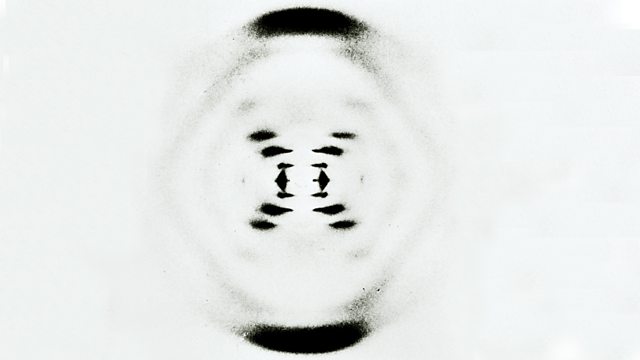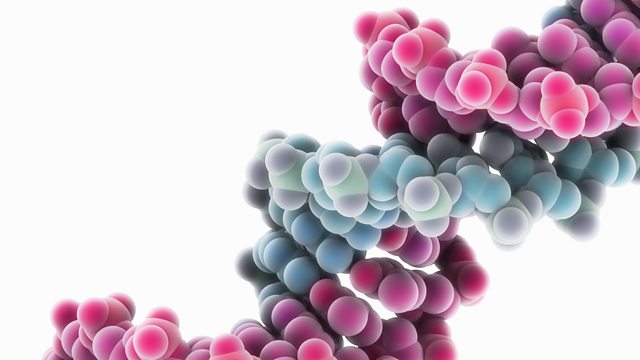Nothing illustrates
the power of DNA evidence more effectively than the case studies–or real–life
experiences-of those whose lives have been changed by such evidence. Whereas
some case studies demonstrate DNA's ability to exonerate inmates wrongfully
convicted of crimes, others show the powerful sense of closure and relief that
a DNA match can bring to victims of violent crime. The three very different
case studies presented below reflect the power of a DNA match and reveal some
of the complexities involved in the criminal justice system. Given the pain
suffered and the time irrevocably lost, these individuals' stories also
indicate an urgent need to improve the capabilities and response times of DNA
databases and eliminate the growing backlog of rape kits.
A Lifetime Struggle: The Courage of
Kellie Greene
Kellie Greene's life changed forever
late one January evening more than 7 years ago following a visit to the laundry
room in her apartment complex. As she opened the door to her apartment, she was
brutally attacked by an intruder who smashed a tea kettle over her head and
then raped her. At some point during the vicious attack, which lasted 45
minutes, Kellie's rapist used dishwashing detergent. It is unknown whether the
rapist used it as a lubricant, after ejaculation to cleanse himself, or
purposely to destroy crucial DNA evidence that ultimately could convict him of
the assault. In any case, forensic experts with the Florida Department of Law
Enforcement were able to retrieve a sample of the rapist's semen from the
sweater Kellie wore that night. It was this key DNA evidence that, on February
28, 1997, linked David William Shaw to Kellie's attack on January 18, 1994.
More than a month would pass, however, before she was told of the DNA match in
April 1997.
The road to recovery for Kellie, and
countless other rape survivors, is paved with anger, loss, rage, sadness,
numbness, confusion, shame, guilt, fear, despair, and courage. The rape is a
memory that never disappears and one that marks a woman's life forever. The
experience shapes how she reacts to life's challenges and unexpected turns, how
she gets through each day, how she sleeps at night, how she feels about her
sexuality, how she feels about her body, and how she feels about men. "I
think I always will struggle with the sexuality. It's never the same. Something
that should be natural becomes something that you have to work at," Kellie
said.
After Kellie's brutal attack and
rape, she did not hesitate to report it to the authorities. "There wasn't
any question. I was beat up really badly," she said. But once at the
hospital, Kellie had to wait 3 hours in a hospital bed with her head wound
still bleeding because the hospital would not treat her without first being
seen by a medical examiner. It took seven staples to close the gash in her
head.
At the time of her rape, Florida was not
processing nonsuspect cases because of funding issues, and, as a result, DNA
evidence in her case sat on a shelf for more than 3 years before it was
analyzed. If it had not been for persistent law enforcement officers,
particularly one detective, Kellie's rape kit might still be sitting on a
shelf. Because officers thought Kellie's rape was similar to rapes occurring in
Daytona Beach, less than 2 hours north of Orlando where Kellie's
attack occurred, her rape kit was dusted off and examined. Once the results
were entered into Florida's
local DNA database, a hit was made via the FBI's CODIS system, allowing for an
almost immediate match. Her rapist's DNA profile did not match the profile of
the rapist in Daytona Beach but that of a man already serving a 25–year
sentence for beating and raping a woman 6 weeks before attacking Kellie.
While Kellie's rapist remains behind
bars today, she continues to fight to keep him there. Quirks in the criminal
justice system, insensitivity toward the victim, and human error allowed her
case to slip through the cracks more than once, resulting in a significantly
reduced sentence for the offender. Not until late April 2000 was Kellie
informed of a plea agreement stating that Shaw could serve concurrently a
22-year sentence for Kellie's rape, a 15-year sentence for a robbery, a 5-year
sentence for obstructing justice, and the 25-year sentence for the first rape.
A motion filed by the defense attorney to clarify the sentence never reached
the state's attorney's office. Finally, the judge signed orders denying Kellie
restitution and denying her request that Shaw be treated with chemical
castration shots. As a result, Kellie's rapist could be released from jail as
early as 2001. Had consecutive sentences been ordered for his brutal crimes, he
would not be released until 2041.
After her trial, Kellie drafted and
introduced a bill in the Florida
legislature that would mandate consecutive sentences for convicted sex
offenders and murderers in prison who are found guilty of subsequent offenses.
Sponsored by Representative Randy Johnson (R), the legislation was called the
Sexual Predator Prosecution Act of 2000. The bill passed Florida's House and Senate unanimously and
was signed into law in June 2000.
Kellie has been speaking out about
her rape and recovery for more than 6 years. In October 1999, she formed a
nonprofit organization named SOAR-Speaking Out About Rape, Inc. She travels
across the country giving rape awareness seminars about the healing process and
the importance of DNA evidence in solving cases. SOAR gave her recovery a
purpose. "I was able to learn something from it and to help others. So
often people think of the rape only and not the aftereffects, she pointed out.
"DNA is really an amazing tool. You don't know where you're going to get
the DNA from but you can get it from a lot of places."
A First Step Toward Healing: Crime
Victim Debbie Smith's Story
Everything changed for rape victim
Debbie Smith when the man who had raped her 6 years earlier was identified.
When processed through Virginia's DNA
databank, the DNA sample of her assailant collected years earlier had produced
a match or "hit" with DNA of an inmate in a Virginia prison. As reflected by her
compelling testimony before the National Institute of Justice's National
Commission on the Future of DNA Evidence, that DNA match gave Debbie final
proof that her assailant would not "come back" for her, as he had
threatened. What is more important is that it allowed her to begin healing.
Debbie's ordeal began at about 1
p.m. on May 3, 1989, at her home in Williamsburg,
Virginia. She was cleaning house,
doing laundry, and baking a cake. A light rain was falling, and her husband–a
police lieutenant–was upstairs sleeping after working the night shift and
appearing in court that morning. After stepping outside briefly, Debbie came
back in and, for some reason, left the door unlocked. Within a few minutes, a masked
stranger entered Debbie's house and nearly destroyed her life. The stranger
dragged Debbie to a wooded area. He blindfolded her. He robbed her. And he
raped her repeatedly, telling her, "Remember, I know where you live and I
will come back if you tell anyone."
When allowed to return home, Debbie
told her husband about the attack but in fear begged him not to call the
police. She just wanted to take a shower and wash away the pain. Debbie's
husband, however, convinced her to notify the police and visit a hospital where
trained medical personnel could examine her and collect physical evidence that
might identify the rapist. If she showered, that evidence would be lost. Debbie
thanks God every day for her husband's advice. Although she was "plucked
and scraped and swabbed" during her visit to the hospital, Debbie's rape
examination kit produced the crucial DNA
evidence that ultimately identified
her attacker.
True peace of mind came for Debbie
Smith on July 26, 1995, when a forensic scientist for the Commonwealth of Virginia
notified Debbie that a DNA match had been made. Her assailant was serving time
in a Virginia
prison for a separate offense. For the first time since the rape, Debbie knew
that her attacker could not come after her. Debbie learned later that her
assailant had gone to jail only months after raping her. Because of a backlog
in Virginia's
DNA database, she waited 6 years to hear about it.
Proof of Innocence: Inmate Ronald
Cotton's Story
Ronald Cotton's story begins on a
summer night in 1984 when two rapes were committed in Burlington, North Carolina.
In each case, an assailant entered an apartment, cut the phone wires, raped a
woman at knifepoint, and stole money and other items. Both victims were taken
to the hospital, where full rape examination kits were completed.
The first victim, 22-year-old
Jennifer Thompson, described her attacker as a tall African-American man in his
early 20s. Police collected photographs of area men meeting that description,
including 22-year-old Ronald Cotton, a Burlington
resident employed at a restaurant near Thompson's apartment. Cotton had two
prior convictions: one for breaking and entering, and another for assault with
intent to rape. Thompson selected Cotton from police photos as her rapist. When
Cotton visited the police station to clear up the misunderstanding, he only
strengthened the case mounting against him. He claimed that he had been with
friends on the night of the rapes, but those friends did not corroborate his
alibi. At a physical lineup of suspects, Thompson again selected Cotton. In
August 1984, police arrested Cotton and took him into custody. In January 1985,
Cotton was convicted of Thompson's rape and sentenced to life in prison. That
verdict, however, was overturned, and a new trial was ordered. Cotton was
optimistic given a crucial discovery he had made about one of his fellow
inmates, Bobby Poole–a tall African–American young man from Burlington also convicted of rape who bore a
strong resemblance to the composite sketch used in Cotton's case. Poole had reportedly bragged to inmates that he had
committed the rapes for which Cotton was serving time.
The second trial was even more
devastating than the first. Both victims testified against Cotton; the jury did
not believe that Poole was the real assailant; and, most damaging of all, the
court withheld evidence of Poole's alleged
confessions. Convicted of both rapes, Cotton received two life sentences plus
55 years in prison.
Back in prison, Cotton "waited
it out" for years. In 1994, however, he learned about DNA testing (a
procedure unavailable at the time of his trials). He filed and won a motion for
DNA testing. In 1995, Burlington
police turned over to the court all case evidence containing semen or other
bodily fluids. Samples from Jennifer Thompson had deteriorated and could not be
tested, but those from the second victim provided a breakthrough for Cotton. On
a tiny vaginal swab, scientists found a bit of sperm. Subjected to PCR testing,
that sample showed no match to Ronald Cotton. He could not have committed the
crime.
The state DNA database matched the
sample to Bobby Poole. On June 30, 1995, almost 11 years after the rapes and 10
1/2 years after being taken into custody, Ronald Cotton was cleared of all
charges and released from prison.






